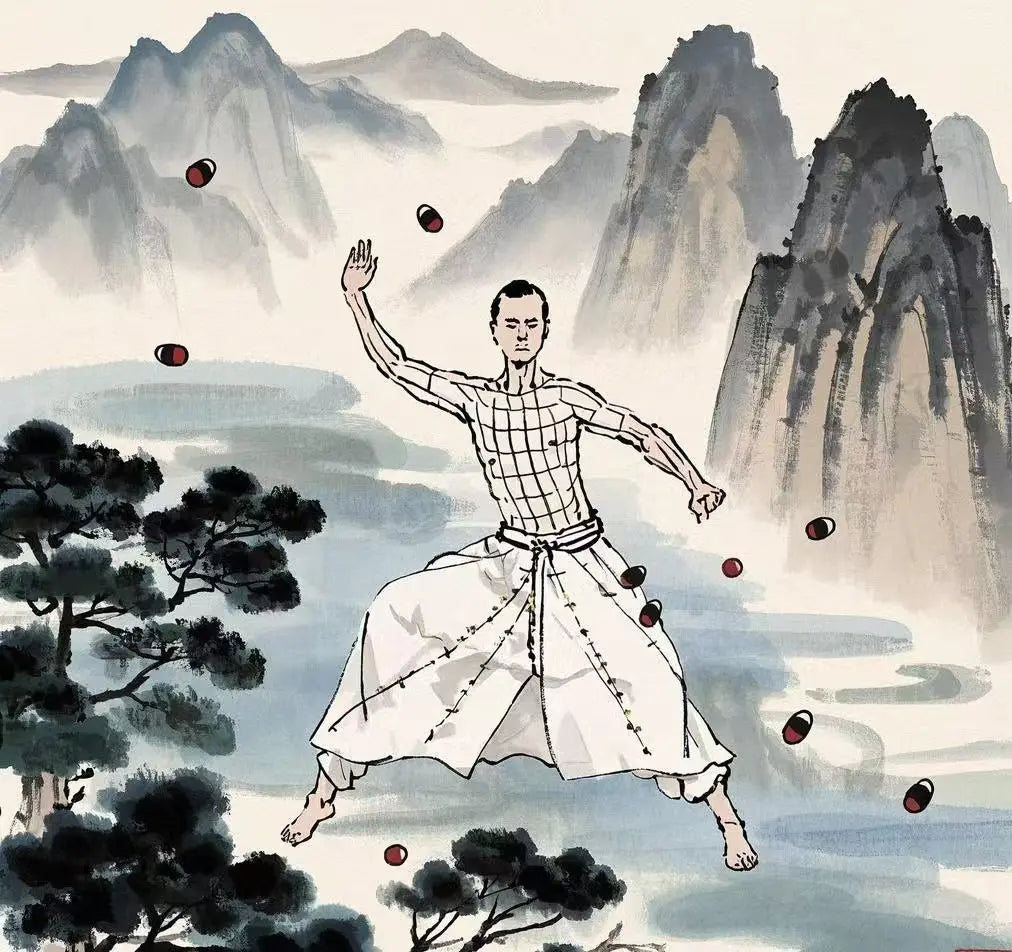Lifting, floating and sinking reflect the tendency of drug action, which is one of the concepts to explain the nature of drug action.
Qi elevation and circulation is an important functional state of the body's vital activities. When there is an obstacle to the elevation of qi, the body will be in a state of disease, resulting in different disease tendencies. Disease tendency is often manifested as upward (e.g., vomiting, coughing), downward (e.g., ejaculation, prolapse), outward (e.g., spontaneous sweating, night sweating), and inward (e.g., unresolved superficial symptoms). Drugs that can improve or eliminate these conditions have a tendency to work downward, upward, inward, and outward, respectively.
Ascending is ascending, descending is descending, floating means dispersing, sinking means astringing, fixing and draining, and thus sinking actually contains both inward and downward action tendencies. Among elevation, floating and sinking, elevation and floating belong to Yang, sinking and sinking belong to Yin. Generally have rising sun published, dispelling wind and cold, Chung spit, open the efficacy of drugs, can be upward to the outside, the nature of the drug is rising and floating; with diarrhea, clearing heat, diuresis and seepage of dampness, heavy town of tranquility, submerged in the sun and quench the wind, eliminating the accumulation of stagnation, descending the reverse vomiting, astringent, astringent, coughing and asthma and other efficacy of the drug, can be downward to the inside, the nature of the drug is sinking. Some drugs are not obvious in their elevation, floating and sinking properties, such as the insecticidal effect of pumpkin seeds. Some drugs are dichotomous, such as ephedra can both sweat and relieve the surface (ascending and floating), but also diuresis and swelling (sinking and descending).
Mastering the ascending and descending properties of drugs can better guide the clinical use of medication to correct the dysfunction of the body to restore normalcy, or to help dispel the evil out of the body due to the situation. Generally speaking, the lesions in the upper, in the surface of the appropriate ascending and floating drugs, such as external wind-cold, with ephedra, cinnamon sticks published; lesions in the lower, in the appropriate sinking drugs, such as solid constipation, with rhubarb, manganese nitrate attack down. Disease against the upper, it is appropriate to lower rather than rise, such as liver yang hyperactivity, when the use of oysters, stone vitex submerged; the disease is trapped in the lower, it is appropriate to rise rather than descend, such as prolonged diarrhea, prolapse of the anus when the use of Astragalus, ascending sesame, Chai Hu and other drugs to benefit the qi and Yang.
(A) the relationship between the elevation of floating and sinking and flavor
Generally speaking, most of the medicinal properties of the rising and floating of the drug has a pungent and sweet taste and warmth; medicinal properties of the sinking of most of the sour, bitter, salty and astringent taste and cold nature. Therefore, Li Shizhen said: “sour and salty no ascending, pungent and sweet no descending, cold no floating, hot no sinking”. But this “no” word, should be understood as “most do not”. As mentioned earlier, flavor is a generalization of the role of Chinese medicine from a particular perspective, and so is the elevation and sinking of medicinal properties. The former will often taste as an important factor in influencing or determining the rise and fall of medicinal properties, in fact, due to the taste and rise and fall are from different perspectives on the generalization of the characteristics of the role of the drug, therefore, as far as the logical relationship is concerned, the rise and fall of the taste is indirectly related to the efficacy of the efficacy of the direct correlation.
(ii) The relationship between elevation, floating and sinking and the texture of drugs
Former people attach importance to the relationship between the elevation and sinking of the drug and the texture of the drug. It is believed that flowers, leaves, skin, branches and other light drugs are mostly floating, while the seeds, fruits, minerals, shells and other heavy mostly sinking. However, the above relationship is not absolute, such as the flowers to reduce qi and eliminate phlegm, stop vomiting and stop er, the medicinal properties of the sinking; Cang Er Zi to dispel wind and relieve epidemics, Xuan Tong nasal orifices, the medicinal properties of the ascending and floating.
(iii) Concocting and compounding affects the elevation and sinking of medicines.
For example, wine fried is rising, ginger fried is scattered, vinegar fried is astringent, brine fried is down. In the compound prescription, the nature of the drug is floating in the more sedative drugs with the pairing, the nature of its floating can be subject to certain constraints. On the other hand, the nature of the sinking drug with more ascending and floating drugs used together, the sinking nature can also be subject to a certain degree of constraints. In some cases, it is necessary to use drugs to lift with the good offices of the qi, to restore the function of the internal organs. Such as the blood by bruises in the soup with Chai Hu, Hovenia ciliata a rise and a fall, to help the blood around the line. Or with the introduction of medicine, “Platycodon grandiflorum carries medicine upward”, “hyssop leads to medicine downward”. Therefore, Li Shizhen said: “lifting and lowering in things, but also in people.”

